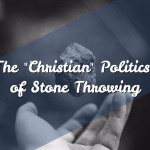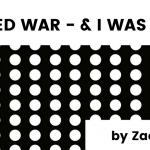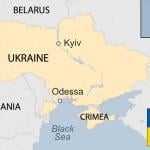This is the second of 3 posts that I plan to do regarding alleviating poverty. This will not be comprehensive in any way shape or form, but aims at doing some critical reflection on the situation we now find ourselves in as American citizens. Everything I write is an interaction with a book titled: Whatever It Takes: Geoffrey Canada’s Quest to Change Harlem and America; by Paul Tough (thus the title). Specifically this will be based on chapter two of this book titled: “Unequal Childhoods.” The first post was concerned with the overarching biblical summons to act on behalf of the poor. This post will now engage in dialogue with Tough’s ideas…
——————————————
Post II: Based on Tough’s essay, what are the similarities / differences in liberal and conservative answers to why people are poor? How are both lacking and what does he propose instead?
According to Tough, the liberal version of why people are poor is mostly a systemic issue. In other words, the conditions in which the people live in the ghettos and poor neighborhoods of America is what keeps people in poverty. He states: “This belief holds that it is the very structure of the American economy that denies poor people sufficient income, and so the appropriate and just solution is to counter those economic forces by providing the poor with what they lack: food, housing, and money” (24). On the opposite pole is the conservative perspective that basically puts accountability on the free individual. He states: “…American poverty is…caused by the bad decisions of poor people themselves and often perpetuated by the very programs designed to help relieve its effects… what the poor need is not handouts, but moral guidance and strict rules” (ibid). From Tough’s perspective both of these polarities are lacking. On the liberal side of the spectrum, Tough would point out that after years of government funding based on perceived and felt needs, the statistics of poverty have not improved as much as the optimism of liberalist ideals would have hoped. On the conservative side of the spectrum, Tough would be quick to demonstrate that it is not simply a morality boost that people in poverty need, you can make moral choices and still remain poor, what is needed is to determine what is causing the cycles to repeat generation after generation.
Tough, who is following the lead of Canada, believes that the solution to poverty and the generational cycle of the inner cities must be addressed by focusing on the children who are growing up in impoverished households. What became evident through many of the studies that he evaluated was that middle class children were often more advanced in the areas needed to be “successful” by American standards than were lower-class children. Heckman’s assessment of The Bell Curve demonstrated the following: “They are poor, this evidence suggested, not because they are genetically flawed, and not because the system denies them opportunities, but because they lack certain skills” (36). In other words, Tough believed that based on this evidence the approach taken must be one that focuses on the children and giving them equal opportunity to acquire the skills needed to end the cycles of their upbringing. For him, and others who take this approach, it does not mean simply ending all government programs that help keep families out of excessive poverty (such as welfare, medi-cal, etc.), but directing such energies to give the children opportunities to acquire the skills they will need in life. This is called the “human-capital” perspective. Tough gives a great summary of this transition:
One advantage of this new perspective was that it took the poverty debate out of the realm of morality… and into the realm of science. Political opinions on poverty had always seemed to be based mostly on gut feelings… The human-capital perspective, by contrast, said, Forget for a moment how different policies make you feel. Instead let’s examine what different policies and interventions actually accomplish (39).

Although the “human-capital” view is one that is full of potential, Tough’s article ends with a great challenge. The way that children develop cognitively within the household demonstrates that lower-class children have a disadvantage. The kids in this situation hear less words that are uttered to them directly as they attempt to build their vocabulary. Not only so, but Farah’s study indicates that such children typically lag in four areas: language, long-term memory, “working memory,” and “cognitive control” (see 46 for more details). The challenge is to now discern how to change the way poorer households operate.
What thoughts does this raise for you regarding how to break cycles of poverty?














